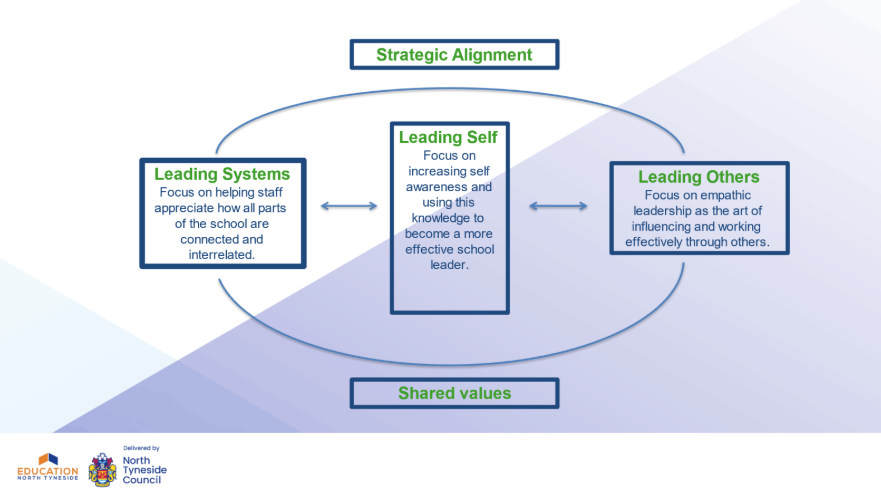The Power of Empathetic Leadership: Listening to Understand

In today's data-driven educational environment, a crucial leadership element is often overlooked: empathy. This human-centred quality—the ability to listen, understand and share others' feelings—creates the foundation for meaningful connections in our schools and settings.
Research shows empathetic leadership delivers measurable benefits in innovation, staff commitment, and organisational inclusivity. As education systems face unprecedented challenges, from pandemic recovery to addressing achievement gaps, empathetic leadership has never been more vital.
The Neuroscience of Empathy
The biological basis for empathy's importance is shown through neuroscientific research. Dr. Antonio Damaso's groundbreaking work in "Descartes' Error: Emotion, Reason and The Human Brain" reveals that individuals with damage to brain regions associated with empathy showed significant relationship deficits, even while their reasoning and analytical abilities remained intact. This neurological evidence challenges the traditional Western philosophical separation between reason and emotion.
“The ventromedial prefrontal cortex—crucial for empathy and emotional processing—plays an essential role in social cognition that pure reasoning cannot compensate for when damaged. Empathy encompasses both cognitive empathy (understanding others' perspectives) and affective empathy (sharing others' emotional experiences).”
Damasio, A. (1994).

Neuroscientists have discovered that empathy activates mirror neurons—specialised brain cells that fire both when we perform an action and when we observe someone else performing that same action, providing a biological mechanism for understanding others' experiences.
Measurable Impact of Empathetic Leadership
Organisational research demonstrates that empathy translates directly into measurable workplace outcomes. A 2019 global study by Catalyst, surveying nearly 900 employees worldwide, found striking data:
Innovation: 61% of people with highly empathetic leaders reported being innovative at work, compared to just 13% with less empathetic leaders
Commitment: 76% of people with highly empathetic leaders reported being engaged, versus only 32% with less empathetic leaders
Inclusivity: 50% of people with highly empathetic leaders reported experiencing an inclusive work environment, compared to merely 17% with less empathetic leaders
Schools led by Headteachers with high emotional intelligence consistently show higher teacher retention rates, increased staff satisfaction, and improved student outcomes. Empathetic leadership correlates strongly with reduced burnout, higher psychological safety, greater innovation, improved collaboration, and increased resilience during organisational change.
The Emotional Dimension of Leadership
Daniel Goleman's concept of "Primal Leadership" (expanded in his 2013 book with colleagues Richard Boyatzis and Annie McKee) emphasises that truly impactful leadership operates "at the level of emotions, through emotions." The "Social Brain" concept recognises that mood and emotion significantly influence performance in ways traditional leadership theories overlooked. Research demonstrates that up to 70% of employees' perception of organisational climate can be traced to the leader's emotional characteristics and actions.
This emotional dimension manifests in several key ways:
Emotional Contagion: Leaders' emotions spread throughout an organisation. When school leaders display negative emotions, these ripple through staff, affecting collective mood and performance.
Resonant Leadership: Empathetic leaders create what Goleman calls "resonance"—a synchronisation of emotional states facilitating collaboration.
Dissonant Leadership: Leaders lacking empathy create "dissonance"—emotional disconnection undermining trust and collaboration.
Cultivating Empathy: Practical Approaches
A 2014 study published in Social Cognitive and Affective Neuroscience demonstrated that empathy can be cultivated through specific practices and intentional effort. As leaders we need to:
Practice Deep Listening: True empathetic listening involves focused attention on understanding others' perspectives, emotional states, and unstated needs. This means eliminating distractions, maintaining eye contact, asking clarifying questions, and creating protected time for one-on-one conversations.
Eliminate Interruptions: Interruptions undermine empathetic connection. Research shows leaders who interrupt frequently are perceived as less trustworthy, regardless of their expertise.
Tune into Non-Verbal Communication: Studies suggest up to 93% of communication is non-verbal. Educational leaders must observe body language, facial expressions, and tone, which often communicate more than words alone.
Cultivate Full Presence: Giving undivided attention has become both rare and valuable. Implementation strategies include "no device" meeting protocols, creating conducive physical spaces, practicing mindfulness, and scheduling buffer time between meetings.
Employ Positive Affect: The act of smiling creates an atmosphere facilitating authentic communication. Research confirms positive facial expressions trigger reciprocal emotional responses.
A Holistic Leadership Framework
The framework I have developed places empathy within a broader context of interconnected leadership domains:

The central part of the framework is Leading Self: This is the foundation which focuses on self-awareness, including emotional self-awareness, self-regulation, authentic presence, reflective practice, and personal renewal.
A key part of leadership is Leading Systems: In this part, the leader(s) address systems leadership— this is helping staff appreciate how all parts of the school are connected. This includes systems thinking, environmental awareness, cultural stewardship, and collective sensemaking.
Finally, (and by definition), leaders need to Lead Others. To do this effectively, leaders should be focused on interpersonal leadership through relationship development, empathetic communication, trust cultivation, conflict navigation, and growth facilitation.
All of these dimensions integrate through strategic alignment and shared values, creating what organisational psychologist Amy Edmondson calls "psychologically safe" environments where innovation, commitment, and inclusivity flourish.
Despite its benefits, implementing empathetic leadership faces challenges. There are time pressures in any leadership role. To overcome these it is vital to integrate short empathy practices into existing routines and recognise that time invested in empathetic leadership often reduces time spent on conflict resolution.
Leaders should consider how they can frame empathy as a strategic asset, sharing research on measurable outcomes, and identifying early adopters who can model empathetic approaches.
Conclusion
Research consistently shows empathetic leadership isn't just morally right—it's pragmatically effective. Leaders who listen to understand create environments where innovation, commitment, and inclusivity flourish. In education, where stakes involve developing young minds, empathetic leadership becomes even more critical.
The neuroscience is clear: empathy is not an optional "soft skill" but a fundamental aspect of effective human interaction. The organisational research is compelling: empathetic leadership delivers measurable benefits. By systematically cultivating empathy, educational leaders can transform school cultures from stressed and fragmented to cohesive and purposeful.
As we navigate increasingly complex educational challenges, sometimes the most powerful leadership action is simply to listen—not just to respond, but to truly understand.
References
Damasio, A. (1994). Descartes' Error: Emotion, Reason and The Human Brain.
Catalyst. (2019). Global Study on Empathetic Leadership.
Goleman, D., Boyatzis, R., & McKee, A. (2013). Primal Leadership.
Edmondson, A. (2018). The Fearless Organization: Creating Psychological Safety in the Workplace for Learning, Innovation, and Growth.
Article by
Richard Kielty
Senior School Improvement Officer
Curriculum and Standards
richard.kielty@northtyneside.gov.uk

